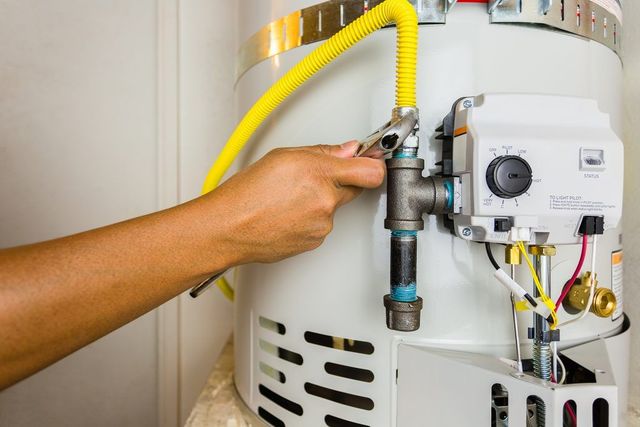Efficient Strategies for Maintaining Your Home's Hot Water System
Efficient Strategies for Maintaining Your Home's Hot Water System
Blog Article
We have uncovered the article on How to Maintain a Hot Water Heater in a Few Simple Steps down the page on the internet and decided it made good sense to quickly share it with you on this page.

Warm water is important for daily convenience, whether it's for a rejuvenating shower or washing dishes. To guarantee your hot water system runs successfully and lasts much longer, routine maintenance is vital. This post gives functional suggestions and understandings on exactly how to maintain your home's warm water system to prevent disruptions and costly fixings.
Intro
Maintaining your home's warm water system may appear complicated, however with a couple of easy actions, you can guarantee it operates efficiently for many years ahead. This guide covers whatever from understanding your warm water system to DIY upkeep tips and recognizing when to employ professional help.
Importance of Maintaining Your Hot Water System
Routine upkeep not only prolongs the life expectancy of your warm water system however additionally ensures it operates successfully. Ignoring upkeep can result in lowered efficiency, greater power expenses, and also premature failing of the system.
Signs Your Hot Water System Demands Upkeep
Understanding when your warm water system needs interest can protect against major problems. Keep an eye out for signs such as inconsistent water temperature level, unusual sounds from the heating system, or rusty water.
Comprehending Your Warm Water System
Prior to diving into upkeep tasks, it's handy to understand the fundamental parts of your hot water system. Commonly, this includes the water heater itself, pipelines, anode rods, and temperature level controls.
Month-to-month Maintenance Tasks
Routine regular monthly checks can aid catch minor concerns prior to they escalate.
Flushing the Hot Water Heater
Purging your water heater removes debris build-up, improving efficiency and lengthening its life.
Monitoring and Replacing Anode Rods
Anode rods prevent corrosion inside the storage tank. Checking and changing them when broken is crucial.
Inspecting and Changing Temperature Settings
Changing the temperature level setups makes certain optimum efficiency and safety and security.
DIY Tips for Maintenance
You can execute a number of maintenance tasks on your own to maintain your warm water system in top condition.
Looking for Leakages
Frequently check pipes and connections for leaks, as these can cause water damages and greater costs.
Checking Pressure Relief Valves
Checking the pressure relief valve ensures it functions correctly and prevents too much stress accumulation.
Protecting Pipes
Insulating hot water pipes minimizes warm loss and can save energy.
When to Call a Specialist
While do it yourself upkeep is helpful, some problems call for specialist know-how.
Complicated Problems Requiring Specialist Assistance
Instances consist of major leakages, electric problems, or if your hot water heater is continually underperforming.
Routine Specialist Maintenance Benefits
Specialist maintenance can consist of detailed assessments, tune-ups, and guaranteeing conformity with safety criteria.
Final thought
Normal maintenance of your home's warm water system is vital for effectiveness, long life, and cost financial savings. By complying with these tips and recognizing when to seek specialist help, you can guarantee a reliable supply of warm water without unanticipated interruptions.
How to Maintain an Instant Hot Water Heater
Before tinkering with your hot water heater, make sure that it’s not powered on. You also have to turn off the main circuit breaker and shut off the main gas line to prevent accidents. Also turn off the water valves connected to your unit to prevent water from flowing into and out of the appliance. 2. When you’re done, you have to detach the purge valves’ caps. These look like the letter “T†and are situated on either side of the water valves. Doing so will release any pressure that has accumulated inside the valves while at the same time avoid hot water from shooting out and burning your skin. 3. When the purge valves’ caps are removed, you have to connect your hosing lines to the valves. Your unit should have come with three hoses but if it didn’t, you can purchase these things from any hardware or home repair shops. You can also get them from retail stores that sell water heating systems. Read the user’s manual and follow it to complete this task properly. When the hosing lines are connected, open the purge port’s valves. 4. You should never use harsh chemical cleaners or solutions when cleaning your unit. Make use of white vinegar instead. It should be undiluted and you’ll probably use about 2 gallons. 5. Now flush your water heater. This task should probably take about 40 minutes. We can’t give you specific directions for this because the procedure is carried out depending on the type, model and brand of your heater. With that being said, refer to the user’s manual. 6. When you’re done draining the unit, you have to turn off the purge port valves again. Remove the hosing lines that you earlier installed on each of the water valves. Put the valve caps (purge port) back in their respective places and be very careful so as not to damage the rubber discs that are found inside these caps. 7. Now that everything’s back in place, check your user’s manual again to find out how to reactivate your water heating system. 8. Once it is working, turn one of your hot water faucets on just to let air pass through the heater’s water supply pipes. Leave the tap on until water flows smoothly out of it. https://www.orrplumbing.com/blog/2014/september/how-to-maintain-an-instant-hot-water-heater/

We had been shown that article about How to Maintain Your Water Heater & Prolong its Life through a friend on another blog. Enjoyed our article? Please share it. Let someone else find it. Thanks a lot for going through it.
This Website Report this page